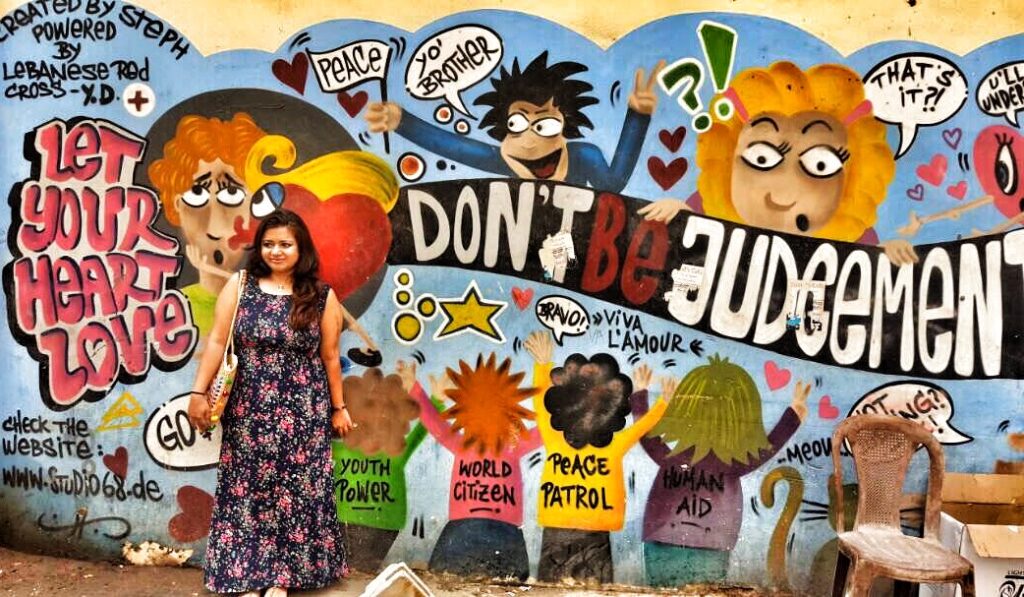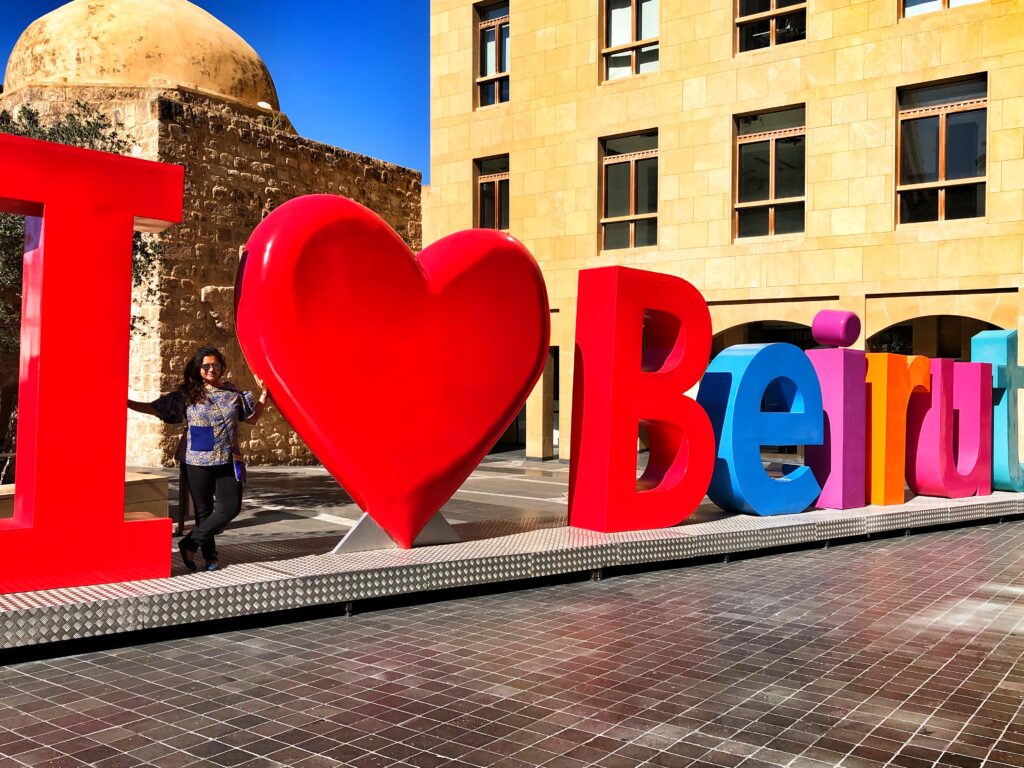I have been to Lebanon twice so far and both times its been incredible. I flew into the capital – Beirut, both times and made my way across the country through a car. Beirut to me, exudes nostalgia, of a great city, of a country, place and time that once was. I have met the city and the country twice, both times, it felt like I had some past life connection the place. Like I was here, in another time and place, where things were different and the streets sang to a tune that resembled a deep longing. An emotion that can only aptly be captured by Fairouz’s Le Beirut. Yet my favourite part of Lebanon is not Beirut, its Byblos.
The streets of Byblos are seeped with history, home to the first ever library in the world, Byblos is the origin of the word bibliotheque which is French for library. As you walk through the small, stone paved streets, the smell of jasmine wafts in the air. Flowers hang in abundance on each side walk, contrasting the cream coloured architecture that dons the city. But what I loved most about Byblos was how the old town tied itself up with a beautiful waterfront. A waterfront which, for thousands of years was a thriving trading spot. In fact, excavations have revealed that Byblos was occupied at least by the Neolithic Period (New Stone Age; c. 8000–c. 4000 BC) and that during the 4th millennium BC an extensive settlement developed there. Byblos is a love story of its own, one that I can write an entire novel about.
As I paint these beautiful word pictures, I am reminded how Lebanon is not a very accessible country for Bangladeshis. In fact it is next to impossible for most South Asians to visit the country due to their stringent visa application requirements. Their reasoning behind this is that they want to control the inflow of South Asian migrant workers into the country, I personally find this to be very discriminatory and racist. The country employs thousands of south Asian domestic workers in sometimes terrible conditions and then discriminates against south Asian tourists who may wait to visit it. I did, however, manage to get a visa on arrival organised by a family member who was working in Lebanon and thank god I did, because Lebanon is a delight! Here are 10 fascinating things about Lebanon.

- The food: I feel that it would be unfair to name food as one of the awesome things about Lebanon when I can literally write an entire post about Lebanese food. From Hummus to Kunnafa, atayef to Fallafel, Lebanon is food paradise and there is something for everyone from vegetarians, vegans and carnivores! I could honestly write an odyssey about Lebanese food. In fact, because of the long history of migration of Lebanese people from their lands, Lebanese food has inspired many dishes across the world. For example the Tacos Al Pastor in Mexico uses the same method as the shawarma, layering meat cuts on top of each other and grilled. The meat is then served on a taco with all the fix ins. And whilst Levantine food is similar in many ways, Lebanese food is far more widely known and has spread across the world much more than any of the other Levantine countries.
- Lebanon is home to not just 1 but 2 of the oldest places in the world! Namely Byblos and Saida (or Sidon) both of which I travelled to and had the immense privilege of experiencing.
- Byblos is where the world’s first alphabets were said to have been created, in fact, the bible derived it’s name from Byblos.
- Furthermore, Byblos is the oldest continually habited city in the world! You can see why I speak in poetry about Byblos. Every street, every brick and mortar transports you to a time beyond our imaginations and holds with each particle tales rich in history. If only those walls could speak…
- Sidon (or Saida) is one of the most important Phoenician cities and has been inhabited for 6000 years.
- Although Muslims make up the majority of the population followed by Christians, Lebanon has 18 religious communities. In fact Lebanon has the largest Christian population in the entire middle east, with more than 40% of the population being Christian. Lebanon’s name is considered one of the oldest in the world and has in fact been mentioned over 70 times in the Old Testament of the bible.
- Lebanon is home of the famous Lebanese poet and visual artist, Khalil Gibran, best known for his work “The Prophet”. A book that has been gone on to become a bestseller of all times and has been translated in over a 100 languages world wide. Khalil Gibran is one of my mother’s favourite authors and so we had the pleasure of visiting his home which was turned into a museum about his life. Located amidst a hilltop in Bsharri, Lebanon, a beautiful 75 mile ride away from the capital Beirut.
- Have you ever seen the Lebanese flag and wondered what the tree at the centre is? That is the Cedar Tree, native to Lebanon, the Cedar Libani, can be found in Cedars of God in Bsharre, Lebanon. Cedars of God is one of the last vestiges of the extensive forests of the Lebanon cedar that anciently thrived across Mount Lebanon.
- Lebanon has a large Diaspora: Over 4 million Lebanese expats live across the world, a population larger than that at home. These are people who retain their Lebanese citizenship. However, there is a large Lebanese diaspora who migrated all over the world and have now naturalised into those countries several generations ago not included in the figure above. Amongst these, the highest number of Lebanese origin people like in Brazil (over 7 million), Argentina (3.5 million) and Venezuela (1 million).




